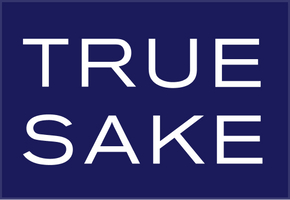Sake Expressions – Akashi-Tai Swimming In The US Market
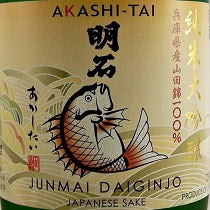
I’m always on the lookout! I always peel my eyes to see what sakes are where in the sake market. So when I first noticed a certain brewery it was available in Germany! Yes! I said Germany and this was almost 8 years ago. I thought to myself, why is this brewery exporting to Europe, but to the US? I’m not a totally obsessed US sake freaker, but I am close. I work so hard at getting sake breweries to export to the US that I sometimes wear rose colored glasses! I feel that EVERY sake brewery should export to the US. Especially, kuras that export to Germany! Come On! (I said this jokingly of course.)
Truth be told it is actually refreshing finding sake breweries that export to other countries and continents. This wasn’t always the case. Only rarely would Japanese breweries export to Non-US destinations, but today the world is wide open for breweries to export to Israel, Spain, New Zealand, Mexico, and Iceland. I think that it is cool, and it means that it’s harder to keep up where Japanese sake breweries are targeting their next generation of drinkers. That said I still have a good memory for those breweries that went to Europe first, and knew that these same kuras also exported to the US. Mostly all except for Akashi-Tai from Hyogo Prefecture. I always wondered why not?
Fast-forward eight years later when I was invited to Kobe for business to business meeting organized by the JRE, which is sponsored by the Japanese Government to promote sake trade. I was given a list of sake breweries that I would be meeting with to speak about retailing sake overseas and of course exporting. On the first part of the trip that involved groups from all of the world ( I was part of the North American Delegation), I met a gentleman from London who told me about a brewery that he was working with in England. He was very outspoken about his job of taking a brewery’s image and brand and reworking it to make it more international hip. I said what did the logo look like and he said a dead fish. I knew instantly he was speaking about Akashi-Tai as the used to have a pretty cool red snapper on their labels. He said that they weren’t cool and he made the brewery update their image.
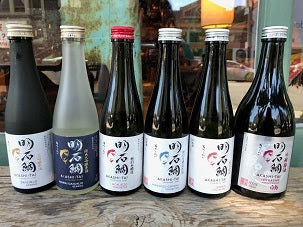
Now fast-forward to three days later when I met the owner of Akashi-Tai. Hi! I told him about always seeing his brand but never having it in the US, even after they exported to Canada! Freaking Canada man! He laughed and told me the history of their exporting and the why and how! It made sense for them to go to Europe first. And then he said it’s time that we export to the US. Yay! So I tasted his line up of sakes that all had new labels and imagery. I liked most of their sakes, and personally felt that the Daiginjo Genshu, Tokubetsu Junmai and Honjozo, and their Ume-shu would do very well in the States. I said that I looked forward to maybe carrying them one day if the importers brought them to the bay Area.
Are you ready to fast-forward again? Well, about three months later I received a very nice email from a former sake sales person for a distributing company in SF. Brian Springer reached out and asked if we would want to taste his company’s new line of sakes? What’s the name? Akashi-Tai! Funny. So we said yes for two reasons. One we wanted to taste the sakes and two we like Brian Springer from Epic. So we made a plan. And he poured their entire line-up for the True Sake team. And I was a little surprised which brews we liked as a team. We actually preferred the Junmai Daiginjo Genshu, the Tokubetsu Honjozo, and the Ume-shu. (Pretty similar results to my tasting a world away in Kobe.)
So this is a little howdy do! Say hello to a new line of sakes from a cool brewery that has had a makeover of sorts to be more appealing to the western restaurant and bar scene. They are unique sakes that speak to wine drinkers, and the Ume-shu is “Killing it” according to Brian, perhaps because it’s great and it comes in a 500ml bottle. One other little factoid, which is a first for me, they have interesting back labels for each sake that tell you how long you should keep the bottle for best consumption. Meaning it says, “After opening consume the bottle in one week” (the Daiginjo) or “after opening consume the bottle in two weeks” (the Honjozo).
Lastly, and in honor of carrying a new brand, Mei wanted to give out gifts such as sake aprons and carafes to those who purchase their sakes first. So why not give them a try? Details are in her letter below:
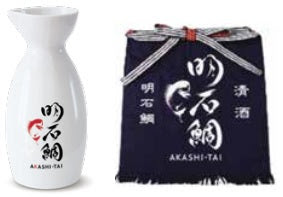
Hi Everyone!
Mei here to announce for every in-store purchasesof the Tokubetsu Honjozo and Ume-shu, we will be giving away a free Akashi-Tai sake carafe! Due to limited supply, only one carafe per person. For purchases of the the Junmai Daiginjo Genshu, you will be entered in a raffle for one of the two sake aprons. Entries will end September 20th and winners can pick up at our store or mail the sake aprons to your preferred address. Raffles are not limited per person and is open to online orders. Kanpai!
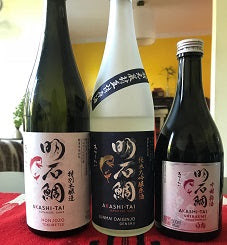
Akashi-Tai
From Hyogo Prefecture. Junmai Daiginjo Genshu. SMV: TBA Acidity: TBA
The nose on this very unique sake is a gentle collection of burnt vanilla, melon, koji rice, and orange peel aromas. If you like to wade through complexity in a glass then this Daiginjo that has been milled to 38% is perfect for you. It is both a mystery and a celebration in a smooth, velvety, round and slippery fluid that finds the entire palate. It is a 16% genshu (undiluted), which gives it body and personality. There are many peek-a-boo flavors such as vanilla and orange, which combine to make a cream-cycle like experience. It is slightly citrus fruity, but drinks more on the dry side. There is a very professional complexity to this brew, which means it’s hard to put your feeling on certain flavors. The bottom line is that it excels in a wineglass, and is ready for those who like to explore the unknown. WORD: Complex WINE: Deep reds/fat whites BEER: Chewy creamy ales FOODS: Seafood, international spiced fare, and veggies/salads.
$71/720ml
Akashi-Tai
From Hyogo Prefecture. Tokubetsu Honjozo.SMV: TBA Acidity: TBA
The nose on this Tokubetsu, which means “Special” for milling purposes usually, Honjozo consists of woody, earthy, ricey, and nutty aromas. Say hello to a crisp and flavorful brew that is gloriously is made with 100% Gohyakumangoku rice and would appeal very much to red wine drinkers who enjoy their tannins. Look for flavors including steamed rice, wheat, nuts, and savory elements that beg to be tasted at different temperatures from chilled to room to slightly warmed. Light and dry this brew drinks with more perceived body than actually what exists, which is really cool. It is clean and compact and does great in a wine glass that actually pulls out some dark chocolate tones. WORD: Clean WINE: Tannin reds/Crisp whites BEER: Earthy ales FOODS:Grilled meats, things on a stick, oily/greasy/salty fare.
$37/720ml
Akashi-Tai
From Hyogo Prefecture. Ginjo Umeshu.SMV: TBA Acidity: TBA
The nose on this Ginjo sake that was infused with plums to extract the sweet and sour flavoring is a robust collection of honey, plum, and juicy aromas. Look at that color! This beautiful Umeshu drinks as lovely as it looks. Sweet, full, lush, round, chewy, viscous, and herbaceous it is not your typically overly sweet plum sake. It is gooey and tart, but there are roasted plum and honey tones galore. It is thick and fun, but not cloying sweet, and it definitely does better with a chill or even an ice cube or two. A round and chewy umeshu with honey tones and herbal hints. WORD: Honey WINE: Sweet Wines BEER:Sweet Ales FOODS: Ice cream, cheese, cigars.
$27/720ml
